Everything you want to know about Dragon worship in China
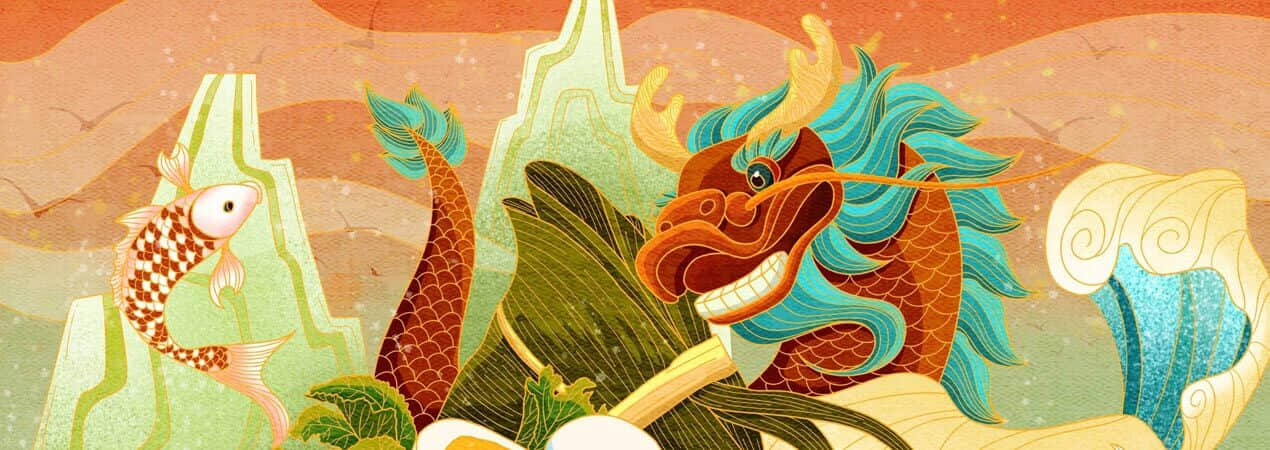
Dragon in Chinese is called 'Long'龙/龍lóng, is a totem of the Chinese nation, a symbol of China, and it has the highest status among animals, deified by and sacred to Chinese people. The divine dragon is worshipped by the Chinese people, from ancient emperors to ordinary people today. Chinese people even call themselves "descendants of the Dragon", a story that is rooted in folklore and history. Feudal rulers in the past maintained this myth by surrounding themselves with dragon-related ornamentation. Dragons are therefore seen everywhere in China, from architecture to clothing, and from foods to Chinese people's names. You will find a lot of dragon images during any tours to China. Our article will help you to under the cultural background of dragon worship in China.
1. What does a typical Chinese dragon look like? How many kinds of Chinese dragons are there?
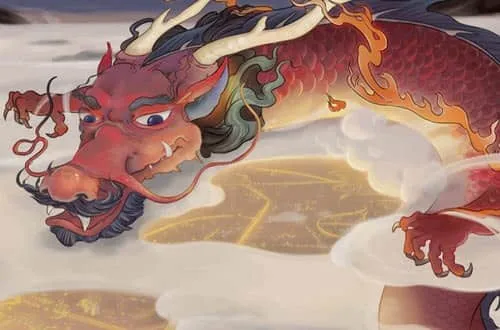
Unlike their western counterparts, most Chinese dragons are wingless, serpentine creatures. While they do not have wings, they can magically fly through clouds. They can also swim in the waters. If you look at paintings or carvings of Chinese dragons, their general appearance can be a composite of real animals - antlers of a deer, head of a lion, eyes of a rabbit, neck of a snake, the face of a camel, scales of a carp, claws of an eagle, paws of a tiger, ears of an ox, tail of a whale, and the eyes of a lobster. Sometimes it has a flaming pearl under its chin.
There are 14 kinds of dragons
Zhulong (烛龙), or candle dragon, also known as zhu yin or illuminating the darkness. It was known to have a human face and the body of a snake. It bestowed day and night upon the land by opening and closing its eyes, and also seasonal winds by breathing. It neither ate nor drank nor slept.
Kuilong (夔龙), a dragon, is a black creature, like a cow, no horns, only one leg. It brought wind and rain when it went in and out of water. It can be seen in the decoration of Chinese bronzes from the Shang dynasty (c.1600-1046 BCE), which became a popular motif on archaistic wares in a variety of media. The Kuilong motif consists of abstract geometric dragons interwoven in a continuous twisting design.
Tianlong (天龙), or celestial dragon, guarded the heavenly palaces and pulls divine chariots.
Shenlong (神龙), the thunder god controlled the weather and has an appearance of a human head, dragon's body, and drum-like stomach.
Fucanglong (伏藏龙), the underworld guardian of precious metals and jewels, is associated with volcanoes. Volcanoes are said to be created when they burst out of the ground to report to heaven.
Dilong (地龙), or the earth dragon, is the controller of rivers and seas. It spends springtime in heaven and autumn in the sea.
Yinglong (应龙), the dragon with wings, is associated with rains and floods. It helped Huangdi (Yellow Emperor) to defeat Chi You (a tribal leader and was regarded as the ancestor of the Hmong People). One legend states that Yinglong also helped Da Yu, the first king of the Xia Dynasty (circa 2070–c. 1600 BCE) to stop the Yellow River from flooding by digging long channels with his tail.
Jiaolong (蛟龙), the hornless or scaled dragon, is known as the leader of all aquatic animals.
Panlong (蟠龙), the Lake Dragon, was said that it did not ascend to heaven.
Huanglong (黄龙), or Yellow dragon, is the hornless dragon. Images of the yellow dragon were strictly and exclusively used by emperors.
Feilong (飞龙), the flying dragon, is a winged dragon that rides on clouds and mist.
Qinglong (青龙), or the Green Dragon, is associated with the East in the Chinese Four Symbols (along with the phoenix, unicorn, and tortoise) of mythological creatures in the Chinese constellations.
Qiulong (虬龙), the "curling dragon", is a horned dragon.
Chilong (螭龙), a hornless dragon, is a deity of water and can be found on roofs to prevent fire.
2. Where did the myth of the dragon come from?
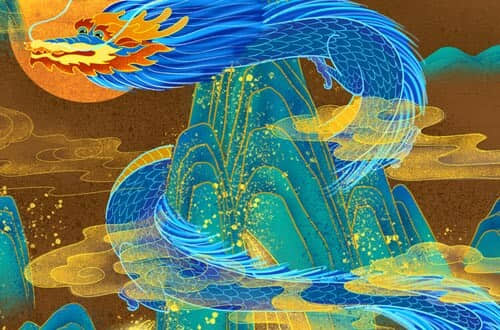
Like most mythical creatures, it is not known when this came about, though some historians suggest a link with traditional Chinese Astronomy of 7 Stars in the East, as they formed the shape of a dragon. Therefore, it is called the 7 Stars of Azure (blue) Dragon of the East (东方苍龙七宿). Those 7 stars can be seen above the horizon in early spring and then move higher up to the south in summer, falling to the west in autumn, and hide below the horizon during winter. This coincides with the cycle of rainwater. As an agricultural country, rainwater is very important and the ancient Chinese people believe it is the dragon that brings rain to water the crops.
The oldest known depiction of a dragon was discovered in 1984, and called the Coiled Dragon carved out of jade. The figure was found in a burial chest in an ancient cemetery dating to the Hongshan era (4700 - 2920 BC). Other jade carvings of dragons have been found in abundance during the Liangzhu era (3300 - 2200 BC). Some Chinese scholars like Mr.WenYiduo (1899-1946) suggest that the collection of beastly parts was based on the political union of several different tribes, each with a different animal as their totem. The dragon was, therefore, a symbolic representation of the assimilation of these tribes into a single nation. An interesting hypothesis, it does not, however, explain the appearance of dragons long before any such political associations existed in early Chinese communities.
3. What are dragon kings?
Dragon kings may have been "imported" from India! Before Buddhism was introduced to China from India during the first century CE, there was no evidence of the concept of "dragon king" in China. In Buddhist scripture, Naga is a deity being of half-human and half-cobra, they are associated with waters—rivers, lakes, seas, and wells—and are guardians of treasures. When Chinese scholars translated Buddhist scriptures, they translated it as "long" (Dragon), hence the idea of dragon kings which controls water. There are dragon kings in rivers, lakes, seas, and even wells. The main dragon kings are from the four seas, namely the East Sea (the East China Sea), the South Sea (corresponding to the South China Sea), the West Sea (sometimes seen as the Indian Ocean and beyond), and the North Sea. Due to this association, they are seen as "in charge" of water-related weather phenomenon. In pre-modern times, many Chinese villages, especially those close to the rivers and seas, had temples dedicated to their local "dragon king". It was customary for the local gentry and government officials to lead the community to offer sacrifices and conduct religious rites to appease the dragon, to ask for rain. There is a dragon temple called Guangrun Lingyu Temple (Temple of Timely Rains and Extensive Moisture) in the Summer Palace in Beijing. The emperor went there to pray for rain when there was a drought. Qinglong emperor of the Qing Dynasty (1644-1911 CE) came there 9 times to pray for rain.
4. Chinese dragons vs. Western dragons
The dragons are both noted in ancient folklore. The Chinese dragon is very different from the belief in the west. Tolkien's book, The Hobbit, portrays the widely known dragon Smaug, that lived beneath the mountain, as well another old English epic Beowulf, the dragons are depicted as being evil, cruel, vengeance, and bloodthirsty creatures that live in isolated places in caves or underground. They have bodies like snakes with crocodile legs and cover with scales or feathers, having wings or spikes on their backs and all breathe fire.
In contrast, the Chinese dragon is recognizable for its long serpentine body that is generally wingless. It is very much a spiritual and cultural symbol, being an auspicious creature, representing strength, wisdom, protection, power, wealth, and good fortune. Unlike the western dragon, it does not harm humans.
5. Why Chinese people worship dragons?
The Chinese dragons live in heaven with gods and have power over natural elements. Therefore, the Chinese worshiped and regarded dragons as the God of Rain, in times of drought or flooding, locals would go to a temple and burn incense to pray for favorable conditions. They are also known for their kindness, to ward off evil, protect the innocent, and bring safety to all. It is believed that they are protectors of life, family, and the nation as a whole.
6. How the Chinese emperor and dragon was related?
Qin Shi Huang, the first Emperor of China, was nicknamed "Zu Long" or grandfather dragon. In 211 BCE, a servant of Qin Shi Huang was stopped by a stranger and was given a jade disk. The stranger asked the servant to forward this jade disk to Qin Shi Huang and added "Zu Long will die this year", then disappeared. To the emperor's horror, he found that this was the very jade disk that he offered to the river god eight years ago. He immediately understood that "Zu Long" referred to himself. In 210 BCE, Qin Shi Huang died on a trip to find the elixir of life which would grant him immortality.
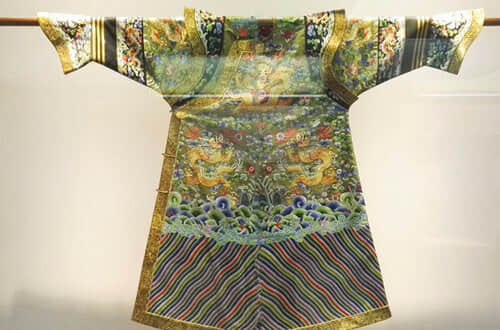
Robes of the dragon
The second Emperor that was related to the dragon is Liu Bang(256-195 BCE), the first emperor of the Han dynasty (206 BCE–220 CE). According to Sima Qian's史记 "Historical Records": Before Liu Bang's birth, his mother dreamt of meeting the divine. At that moment, the sky darkened and was followed by lightning and thunder. When Liu's father came in to attend to his wife, he was shocked to see a dragon beside her. Soon after, his wife became pregnant and gave birth to Liu. As Liu was growing up, his friends would always notice a silhouette of a dragon hovering over him when he was drinking. He served as a low-rank official in the local police station. To avoid punishment for the mistakes he made, he often hid in the forests, but his wife knew his whereabouts as there were floating clouds wherever he went. Floating clouds are usually a symbol of the dragon. He joined in the rebellion against the Qin Dynasty and overthrew it, thus founding the Han Dynasty (206BCE-220CE).
It has been said that the Emperor was immortalized into a dragon and ascended to heaven. This legend contributed to the use of the Chinese dragon as a symbol of imperial power. The symbol of the yellow or golden dragon with five claws on each foot was the symbol for the Emperors of the Chinese dynasties. During the late Qing Dynasty, the dragon was even adopted as the national flag. It was a capital offense for ordinary people to wear clothes with a dragon symbol. The Emperor was the only person with the divine right to wear robes of the dragon, sit on a dragon chair (throne) and sleep on the dragon bed.

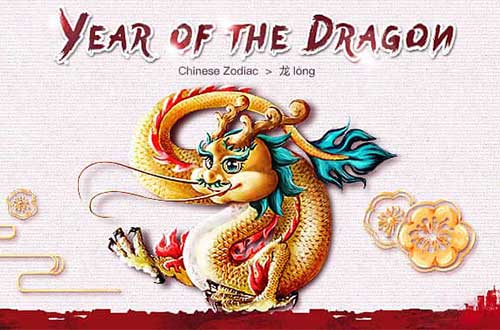 Year of the Dragon - Zodiac Sign 2024
Year of the Dragon - Zodiac Sign 2024 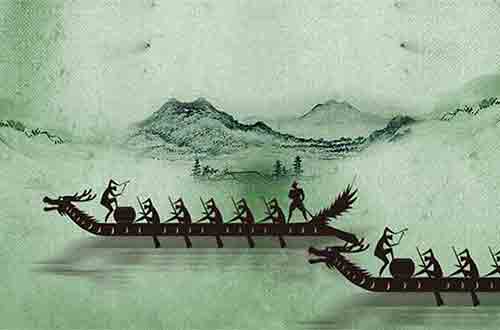 Dragon Boat Festival Facts, History and Traditions
Dragon Boat Festival Facts, History and Traditions  Dragon Boat
Dragon Boat 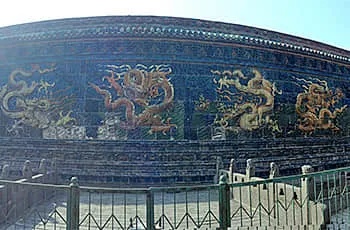 Nine-Dragon Screen
Nine-Dragon Screen